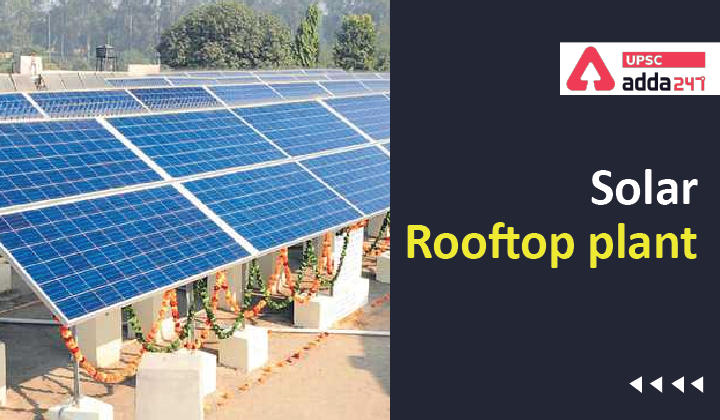Table of Contents
Solar Rooftop Plant: Relevance
- GS 3: Infrastructure: Energy, Ports, Roads, Airports, Railways etc.
Solar Rooftop Plant: Context
- Recently, Ministry of New and Renewable Energy (MNRE) has simplified procedure for solar rooftop plant and has allowed households to install rooftop solar plants by themselves or through any vendor of their choice under the Rooftop Solar Programme.
Get Free Study Material for UPSC and State PCS Examinations
Solar Rooftop Plant: Key points
- Previously, residential consumers were required to source the rooftop solar plant from listed vendors only to avail subsidies and other benefits under the Rooftop Solar Programme.
- According to the new simplified procedure, a national portal for registering applications from the beneficiary, approval thereof and tracking progress will be developed.
- The household beneficiary who wishes to install rooftop solar (RTS) plant under the new mechanism will apply on the national portal.
What is a solar rooftop system?
- In a solar rooftop system, the solar panels are installed in the roof of any residential,
commercial, institutional and industrial buildings. - This can be of two types
- Solar RooftopSystem with storage facility using battery, and
- Grid Connected Solar Rooftop System.
What is a Solar Rooftop System with Storage facility?
- Such rooftop system has battery as storage facility. The solar electricity is stored in the battery and can be utilized during night also when the sun is not available.
What is a Grid Connected Solar Rooftop System?
- In grid connected rooftop or small SPV system, the DC power generated from SPV panel is converted to AC power using power conditioning unit and is fed to the grid depending on the capacity of the system installed at institution/commercial establishment or residential complex.
- These systems generate power during the day time which is utilized fully by powering captive loads and feed excess power to the grid as long as grid is available.
- In case, where solar power is not sufficient due to cloud cover etc., the captive loads are served by drawing power from the grid.
About Grid Connected Solar Rooftop Programme
- This scheme was launched to achieve cumulative capacity of 40,000 MW from Rooftop Solar (RTS) Projects by the year 2022.
Grid Connected Solar Rooftop Programme: Features
Component A: Central Financial Assistance (CFA) to Residential sector – 4 GW
- CFA @ 40% for capacity up to 3 kWp
- CFA @ 20% for capacity beyond 3 kWp and up to 10 kWp
- CFA @ 20% for GHS/RWA capacity up to 500 kWp (limited to 10 kWp per house and total upto 500 kWp)
Component B: Incentives to DISCOMs – for initial 18 GW Capacity
Progressive incentive for Discoms for achievements above baseline (the cumulative RTS capacity installed at the end of previous financial year).
- No incentives for capacity addition up to 10%
- 5% incentives for addition beyond 10% and up to 15%
- 10% incentives for addition beyond 15%
Also Read:





 TSPSC Group 1 Question Paper 2024, Downl...
TSPSC Group 1 Question Paper 2024, Downl...
 TSPSC Group 1 Answer key 2024 Out, Downl...
TSPSC Group 1 Answer key 2024 Out, Downl...
 UPSC Prelims 2024 Question Paper, Downlo...
UPSC Prelims 2024 Question Paper, Downlo...




